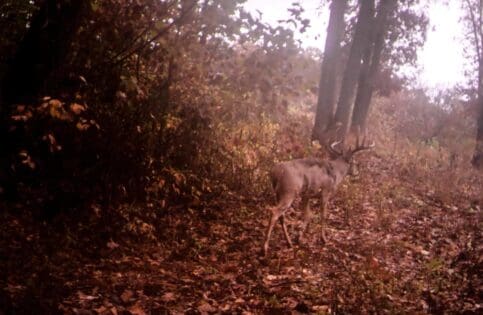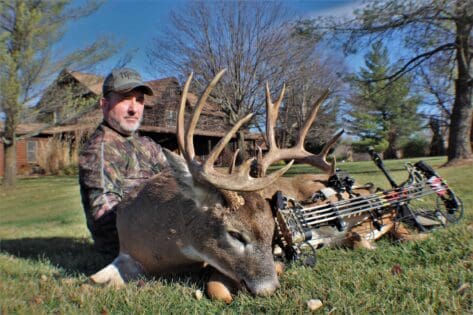The Drawing Power of a Thicket for Whitetails
Food plots have taken all the luster of today’s whitetail hunting era. Food plots undoubtedly help in attracting and holding deer, but few people realize the potential a small thicket can create for a phenomenal treestand location. The cover and food that a thicket creates will hold and attract mature whitetails season after season. 
Advantages from Creating Thickets for Whitetail Hunting
The nice thing about creating a small thicket is that it doesn’t take a lot of money or equipment. Once created, it’s self-sustaining for several years. Before you get the chainsaw, you need to consider how this thicket is going to affect the deer movement and how you and what wind directions you’ll be able to hunt it on. A thicket no bigger than a couple acres in a rectangular shape can help manipulate deer movement through your farm. Even a small 1/4 acre or 1/2-acre forest opening will draw deer. Creating a thicket in a natural travel corridor or funnel is ideal for a bowhunter. Creating an opening adjacent to a major food source can also be advantageous. It can act as a transitional area where deer will feel secure traveling through on their way to feed, browsing on the woody growth and forbs as they go.
Let the Light Shine!
A chainsaw is all that’s required. Begin by opening up the tree canopy allowing sunlight to hit the forest floor. You don’t necessarily have to clear cut an entire acre of trees to create suitable cover but by taking out soft maples or any other non-desirable tree will work. Before any chainsaw work, burning off any type of debris like old logs and leaves will help promote better growth. Hinge cut the trees you do cut to create extra browse and structure for a few years. Hinge cutting also promotes the growth of several different vines that deer are drawn too. For invasive plants or undesirable trees, spray the stumps with herbicide. If possible, disturb the soil by discing and it enhance the speed of growth of a variety of different shrubs and forbs. Plants like greenbrier and bush honeysuckle are highly preferred by deer into the fall and winter months and make for great daytime browse within a bedding area. Early spring, before the green up, is the optimal time of the year to conduct habitat improvements on your deer hunting property.
Best Time to Deer Hunt Thickets?

The end of October and beginning of November are typically the best times to be hunting over a small thicket that deer use as a bedding area. Bucks will be scent checking the downwind side for estrous does so your set up should be adjusted accordingly. You’ll probably find several scrapes around the edges of the thicket on major trails going in and out of the thick cover. This is pretty much a bowhunter’s dream set up. Hunting on the downwind side of thick travel corridor with a big, social scrape within bow distance. Many times, bucks can develop a short-lived pattern at the end of Oct./Nov. when a specific doe is close to coming into estrous, they can become very patternable over scrapes within or on the perimeter of these bedding pockets.
-Zach Jumps
Zach@HeartlandLodge.com
Last Updated: September 5th, 2023





Very good information Zach! Nice article!
Thank you Corey!
The topic of thickets came to mind and I really liked your take on the thicket.Over the years I have always been intrigued by this and can’t drive past an area that has what I think now there Is a really good one.
Very informative, I’ve been creating food plots on my land and this is the next step in our plan. Thanks zach
Great article Zach thank you will be applying these to my 2023 season 🦌. Got the perfect spot. Thanks again
One thing you might want to add is to throw Biologic ‘something’ in the cleared area. Especially if it is disced. I put out Australian ChickPeas. It comes back every year with a high-protein broadleaf.
Good idea! Thanks for sharing!